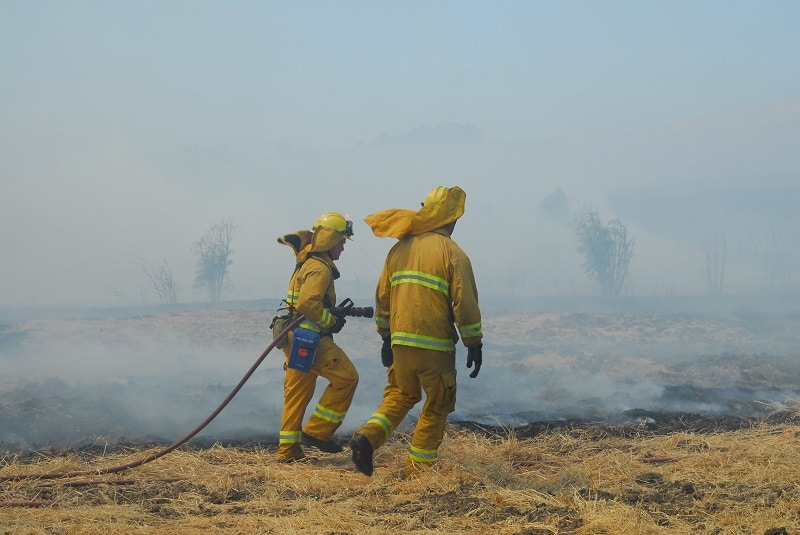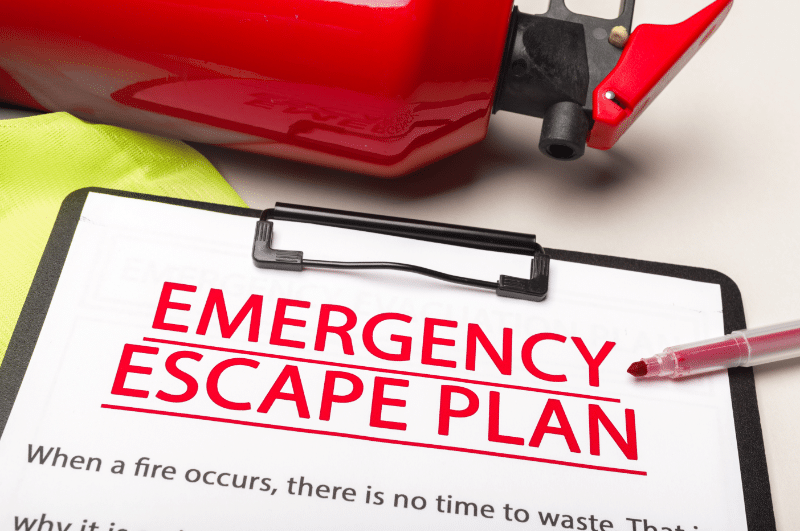
Residents of Colorado are familiar with the changes that come with each season – and are becoming increasingly familiar with a year-round fire season and fire preparedness. While typically worst during the months of May through August; due to ongoing drought issues wildland fires can start at any time and any place.
For example, consider the devastating Marshall Fire that burned over New Years in Boulder County. Colorado’s fire season is now in effect 365 days a year.
Seasonal Outlook for the Fire Season
Sadly, this year is looking like the last few. Predictive Service’s Seasonal Outlook for the Rocky Mountain Area includes important information about the considerations that go in to predicting fire seasons. This report lists many factors that could affect the upcoming season ranging from high temperatures and strong wind events causing drying to the continued downsloping along the Palmer Divide (caused by La Nina) that prevents more precipitation from falling.
The report specifies that wind and higher temperatures could negate the benefits of fire fuels “greening up” or retaining moisture, causing fire risk to become elevated earlier than normal. They also include earlier than normal melt off in the mountains as La Nina begins to dissipate in May and June. The overall verdict? “Above normal significant fire potential” was expected starting as early as the windy months of March and April based on history.
One problem with spring storms, while they finally bring us much-needed moisture, is that they also encourage the growth of plants that then quickly dry out in the hot summer and create even more fuel for fires in late summer.
Think of the tall, thick grass that grows intensely in late spring and then dries out over the summer, leaving wide-open areas of parched plants that could fuel a quick-moving wildfire. The lack of moisture overall is also hindering many efforts at controlled burns, which are used to remove these fuels that can feed wildland fires and cause them to spread so quickly.
We are already seeing the effects of these conditions in the Pikes Peak region. The fire off of Interquest Pkwy on April 22 is one good example, as well as the fires in Falcon (April 8), and in unincorporated eastern El Paso County near Curtis Rd (April 10), south of Calhan (April 12), and Peyton (also on April 22). All these fires precipitated evacuation orders. Both the El Paso County Sheriff’s Office and the Colorado Springs Fire Department have issued fire restrictions for their respective areas.
Before the Fire: Mitigation Strategies and Resources
The best time to prepare for a fire is well before it is even a possibility. There are many mitigation techniques you can implement around your home and property, and some may even come with insurance benefits – check with your home insurance company. Federal and local governments both provide much information about fire prevention and mitigation, and good resources to view include the National Fire Protection Association, FEMA’s Ready.gov and the International Association of Fire Chiefs – Wildland Fire Programs.
These sites share many of the same tips regarding preparing your home well before any fire approaches. The IAFC site has step-by-step instructions that break different areas around your home into mitigation zones that each have their own tasks to be done. Common tips include building with fire-safe materials, ensuring you have a water source and a hose that can reach any part of your property, and clearing away leaves, dead plants, and other organic debris for at least 30 feet from your home, creating a safe zone.
Additional suggestions include screening in porches and decks to prevent embers from floating in, cleaning organic matter out of your gutters, pruning trees of branches below 6-10 feet, keeping your lawn hydrated and mowed down, and removing dead shrubs and trees.
It is also wise to create an emergency plan well in advance of any actual emergencies. This includes making sure important documents and medications are easy to find and gather in case of evacuation, as well as ensuring you have at least two routes out of your neighborhood.
It is also vital that everyone in your home is aware of the plan and there is a pre-determined meeting place should evacuations be issued. More specific information can be found at the National Fire Protection Associations Emergency Preparedness page. In addition, be sure to include any pets or livestock in your planning – make sure animals are used to any travel kennels you may use and that horses or other livestock can load into trailers safely and quickly.

After the Fire Starts: Evacuation
Once a fire starts, it can move incredibly fast. If you can see smoke, be prepared to follow the news for updates and be on the lookout for evacuation orders. The El Paso County Sheriff’s Office website has a breakdown of the levels of evacuation orders, based on the “Ready, Set, Go” program from the International Association of Fire Chiefs. The Colorado Springs Fire Department also has its own version of this information.
This program breaks down evacuations into three stages, with steps for evacuees in each one. It is worth a review, or even a printed copy hanging on the refrigerator.
Ready!
“Ready” encompasses the planning portion. This is when emergency plans are made, possible shelters and family meeting places are located, and evacuations routes are mapped. It is a good idea to pack a “go bag,” or basic supplies (food, medicines, first aid kits, portable phone chargers, clothing, etc.) to have ready to go at a moment’s notice.
Generally, two weeks of supplies are recommended. This is also when important documents and medications should be gathered and plans for evacuating animals and pets may need to begin in earnest. This is also a good time to ensure you have signed up for evacuation alerts through the Peak Alerts Everbridge system. You can receive phone calls, texts, or updates via the Everbridge app. This is the fastest way to get accurate, real-time evacuation information and updates.
You can also follow the news reports or news agencies and responding agencies on social media for updates, but they may be delayed by several minutes, which can make a huge difference during an evacuation. Refrain from calling 911 and tying up the lines for updates or questions if you do not have an emergency or need assistance since you can receive accurate updates through the above resources.
Set!
“Set” is concerned with voluntary evacuations. This is the time to load supplies in your vehicle, move livestock and closely follow any updates on the situation. If you or your loved ones have any disabilities or special needs that may slow an evacuation, it is wise to leave now before mandatory evacuation orders come in.
If help is needed to evacuate, this is also the time to call 911 for assistance in doing so. If you feel for any reason a mandatory order is coming, it may be best to simply leave at this point to avoid traffic issues that may arise.
Go!
“Go” is the mandatory evacuation portion and is implemented when your property – and your life if you do not leave – is in immediate danger. This is not the time to start packing, this is the moment of action. Determine which evacuation route you will take and ensure you have a meeting place if you and your loved ones get split up.
Realize you will not be allowed to return to your home until orders are lifted, so make sure you have everything you need. In some cases, it is possible that law enforcement will be coming door to door at their own risk to ensure that you are aware of the evacuation and to see if you need assistance. This is considered an emergent situation and should be taken seriously.
Writer’s Note: I wrote this article, not only as a local citizen living in a rural area that is essentially a tinderbox but also as a former 911 dispatcher who has worked too many fires and evacuations. I have seen and heard the chaos that can ensue, and I know all too well how quickly the situation can change when it comes to wildland fires. I and my former coworkers have sent out Everbridge notifications and updates during the turmoil. I urge you to consider the tips in this article and to review the resources provided themselves. Plan and discuss this topic with your loved ones. It can be a matter of life and death, not only for you and your family but also for the responders that are trying to contain the fire and run the evacuations.










[…] For the next few months, fire departments across Colorado will be working to keep the public informed about fire risks and prevention procedures. To learn more about wildfire preparedness visit https://www.coswildfireready.org/. To better prepare and plan for the fire season, consider reading up on planning and safety. […]